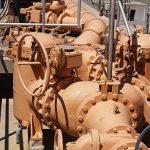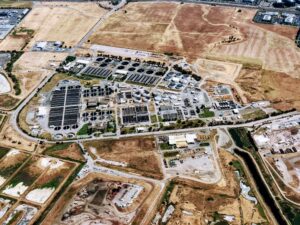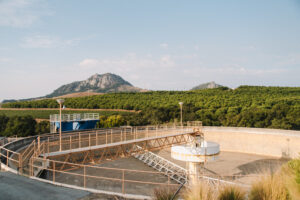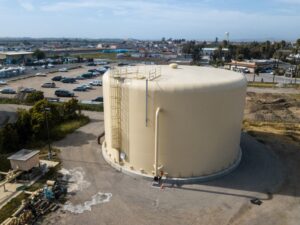Cost estimating for engineering is a thorough and detailed process to ensure each of our clients receives an accurate estimate for their respective budgets. Estimating project costs involves monitoring and organizing a variety of moving parts within our industry, economy, and the project itself.
The definition of cost estimating is approximating the cost of resources or activities identified for the construction of a particular project. We use four separate steps to breakdown the estimating process:
- Order of magnitude (high level conceptualization)
- Preliminary estimate (specifics of project, what do you *need*, we do in stages – 30%, 60%)
- Detailed estimate (90% detailed)
- Engineer’s estimate/final estimate (what the project costs based on design, plus breathing room for unknowns and contractor bids)
Purpose of Cost Estimating
There are also four main reasons our clients usually have for requesting a cost estimate. Often Owners want resources and a budget outlined for future projects because they are allocating finances for their 5-10 year capital improvement plans. Another reason is to evaluate alternatives for a project and look at capital versus life-cycle costs for different options.
Clients may also ask for a cost estimate when they are preparing a project budget, or if they want to provide a basis for their project costs.
Cost Estimating Steps
We employ a thorough and detailed process to ensure our clients receive the most accurate cost estimate for their project and budget needs.
All consultations start with solidifying our understanding of the scope of the project. The main question we start with is “What is the end asset?”. As the project progresses, we work with our clients to eliminate unknowns during progressing design phases until the estimate is completely transparent and organized.
Our next step is identifying resources for our client’s project. We apply costs to resources such as labor, materials, equipment, site work, permitting, location, and escalation costs when the project is scheduled in the future.
As the design stages progress, project unknowns are methodically reduced. We typically see a preliminary contingency of 30% which decreases in 5% to 10% increments until the cost estimate is finalized.
We further support our clients by organizing the project’s output to support the decision-making process and streamline construction.
Tools for Gathering Costs
RS Means is a popular resource in our industry and one we often use for our clients. MKN has also compiled data from previous bid results for specific projects so our clients receive the most detailed cost estimate possible. We bring previous project experience to the table with new or returning clients as our staff offers a wide variety of experience in the Water/Wastewater industry through planning, procurement, and construction.
Another well-utilized tool in cost estimating is contractor input (e.g. specialty contractors like cast-in-place pipe liner installers and MKN’s Construction Management Team). We like to maintain positive relationships with contractors in our areas of operation as they can give us specialized insight into project construction costs. Their information is especially helpful when tracking cost specifics and finalizing material costs.
Unit costs for materials are also a key tool in delivering an accurate cost estimate to our clients.
Types of Costs
The following is an overview and brief breakdown of the categories affecting a project cost estimate:
- Construction Costs (Capital) – contractor labor/equipment, materials (pre-procurement), demolition & disposal of materials (e.g. asbestos), potholing
- Operation costs – skilled operators, utilities, loss time (down time during construction) costs, reporting activities (e.g. sampling/testing, SCADA control)
- Maintenance costs – how often the client will need to replace or repaint over the life span of the asset (e.g. tank painting, valve replacement, pump servicing, etc.)
- Owner’s costs during construction – inspection/testing (soils/structural OBS), client may have site-specific costs they want included in estimate (specialized teams/operators, cost of system being down), permitting/regulatory approvals, owner resources for project (management/coordination), bypassing operations/shutdowns/system operation/construction support, and system integrators
Factors Affecting Accuracy
To ensure our Cost Estimations are accurate, we also factor in variable and unstable costs, so the project is not under threat of going over budget.
- Cost of materials can change drastically and suddenly, they are very susceptible to economic factors
- If contractors are busy, bids will typically be higher for a client’s project to allow for added schedule flexibility at a higher profit
- Economic fluctuation is also concern that can often increase costs, during slow periods contractors’ bids may be more aggressive to win more work just to keep crews busy at a lower profit
- Specialty construction projects often cost more and are dependent on the availability of local expertise (equipment, process prices are usually non-negotiable as there is only 1 supplier)
- Contractor risk assessments are a great resource for better defining possible issues and extra costs
- Knowledge of area and client may yield varying bid results; some clients have bad reputations and contractors will charge more for to work for them
- Permitting requirements can be more costly in regions where regulatory constraints are more heavily imposed
- Public interest marketing and outreach can impact project budgets in cities where residents are more involved and interested in local construction and development activity
- Easements and underdefined site access requirements
- If materials need to be procured per Buy America contract provisions, pricing may increase (x2) on materials alone
- Labor requirements are dependent on the client and greatly influence costs. Does the client use a project labor agreement (PLA) or union labor? Labor is the largest unknown risk and therefore largest cost, though it usually costs less with non-union labor







